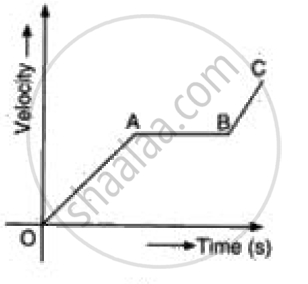Advertisements
Advertisements
प्रश्न
The rate of change of velocity is ______.
उत्तर
The rate of change of velocity is acceleration.
APPEARS IN
संबंधित प्रश्न
A toy car initially moving with uniform velocity of 18 km h-1 comes to a stop in 2 s. Find the retardation of the car in S.I. units.
A motor bike running at 5 ms−1, picks up a velocity of 30 ms−1 in 5s. Calculate
- acceleration
- distance covered during acceleration.
The acceleration of a body is 8.5 ms-2. What does this statement mean?
Distinguish between uniformly and non-uniformly accelerated motions.
The speed of a car increases from 10 km/h to 64 km/h in 10 seconds. What will be its acceleration?
Interpret the following graph:
Convert the following acceleration:
7200 km/h2 into m/s2
The graph shows how the velocity of a scooter varies with time in 50 s.
Work out: Acceleration.
Correct your friend who says that acceleration gives the idea of how fast the position changes.
Assertion: The accelerated motion of an object may be due to change in magnitude of velocity or direction or both of them.
Reason: Acceleration can be produced only by change in magnitude of the velocity. It does not depend the direction.
What do you understand about negative acceleration?
If the velocity of a body does not change, then its acceleration is ______.
The Unit of acceleration is ______.
The acceleration of the body that moves with a uniform velocity will be ______.
What is meant by negative acceleration?
Acceleration is defined as the rate of change of ______.
If a body starts from rest, what can be said about the acceleration of the body?
Assertion: When a body is subjected to a uniform acceleration, it is always moving in a straight line.
Reason: Motion may be straight-line motion or circular motion.
